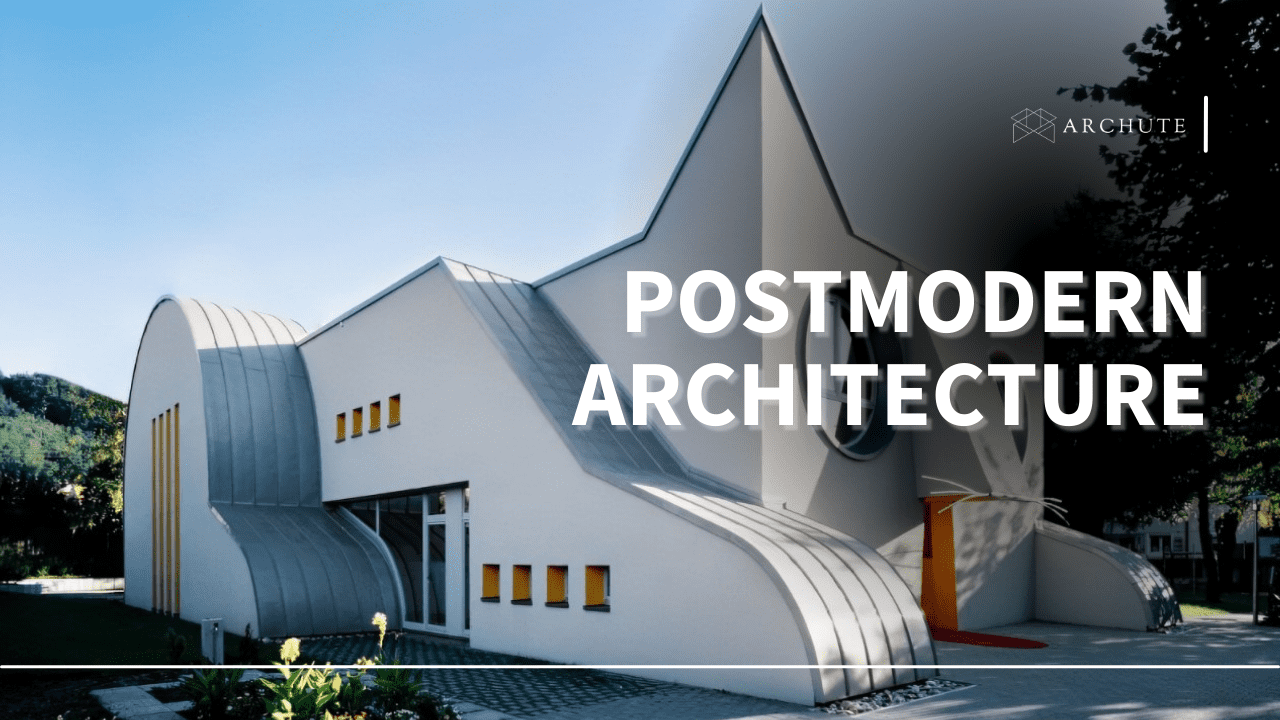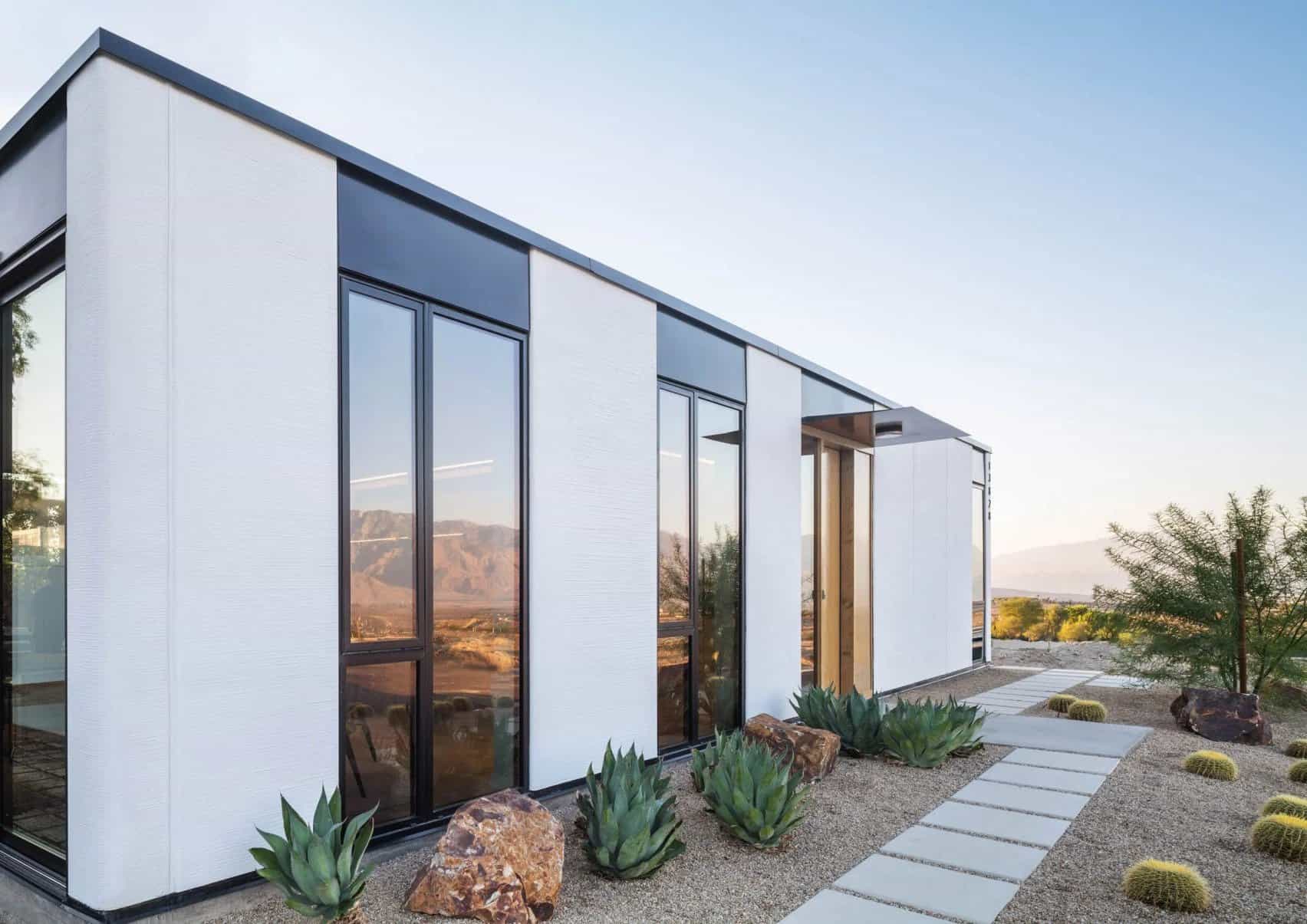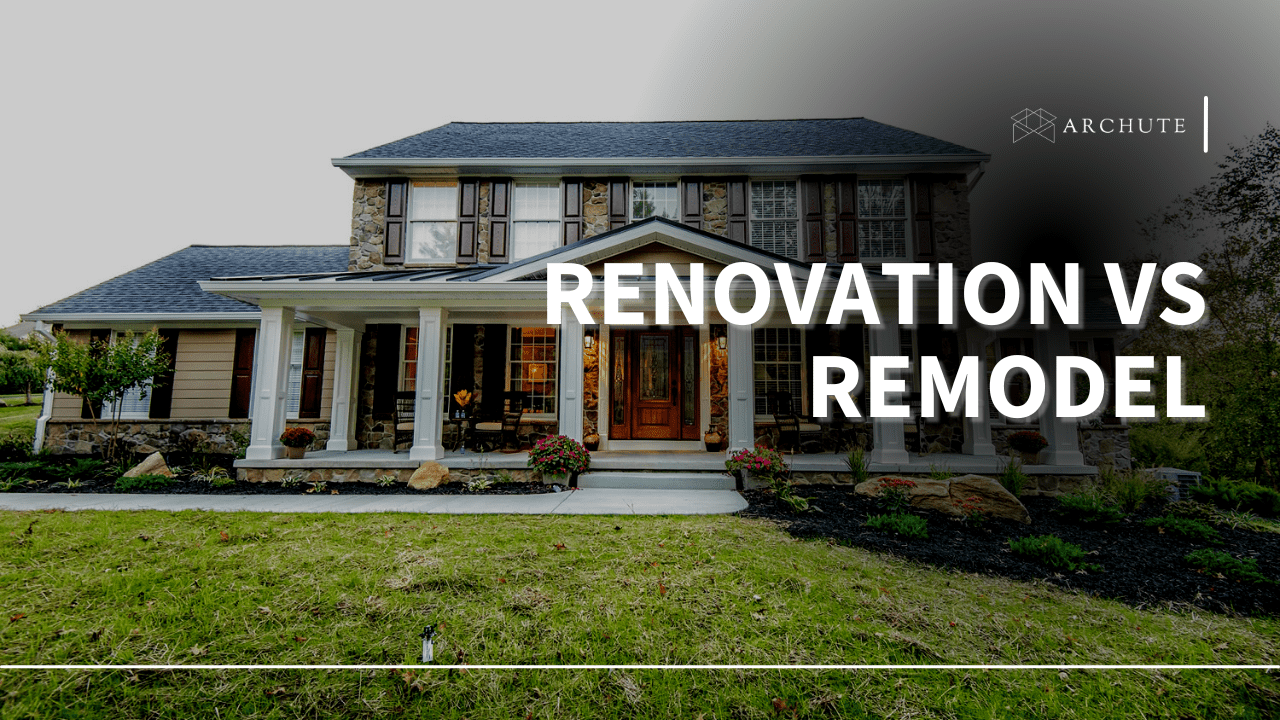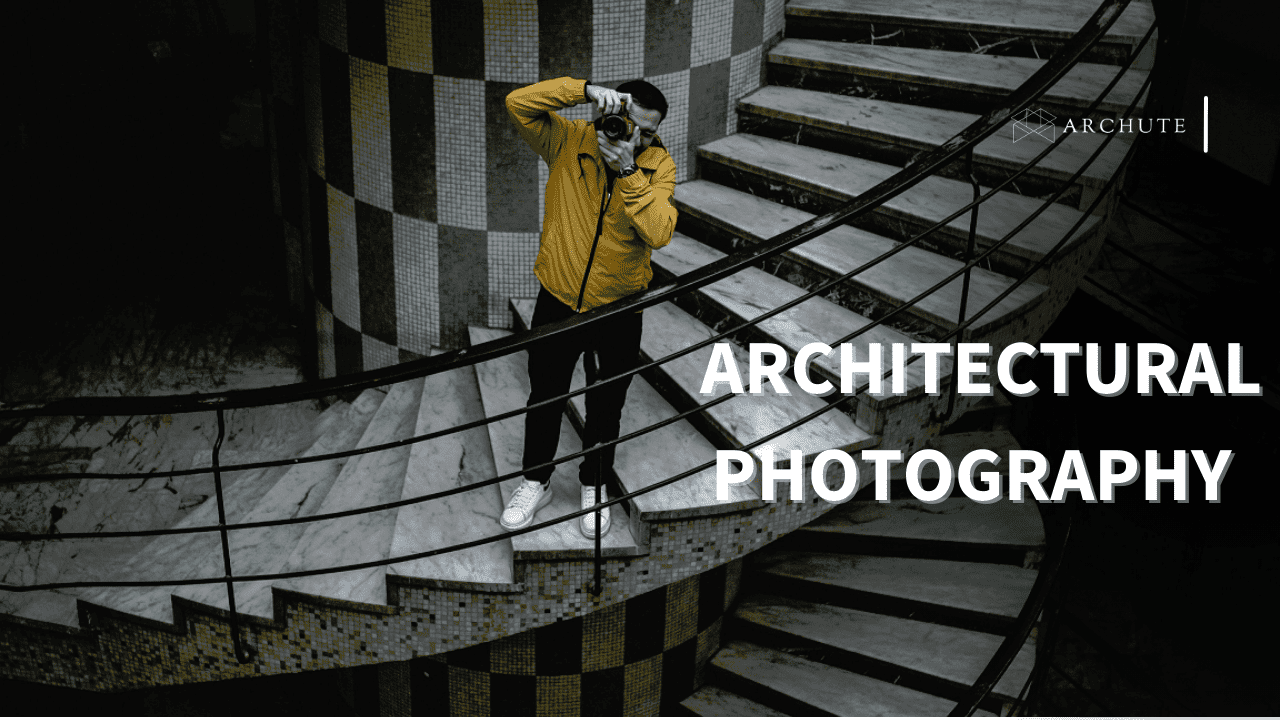Postmodern architecture, with its bold patterns, vibrant colors, and humorous forms, illustrates the cultural revolution that occurred during the second half of the 20th century. It’s a style that defies modern architecture’s strict rules and favors a more diverse, individualized approach.
It’s a fascinating period in architectural history that continues to have an impact on design today. Postmodern architecture is an intriguing topic that continues to inspire new ideas and create debates in the architectural world, whether you’re a fan of its bold, varied designs or a critic of its sometimes kitschy style.
So fasten your seatbelts, for the world of postmodern architecture is a crazy and colorful trip. Come along as we learn more about postmodern architecture, its characteristics, and examples of postmodern architecture.
What is Postmodern Architecture?
Postmodern architecture is a playful, eclectic style that embraces color, uniqueness, artistry, and ornamentation. It can be considered the modern take on traditional methods, which means using the same materials but in a non-traditional way.
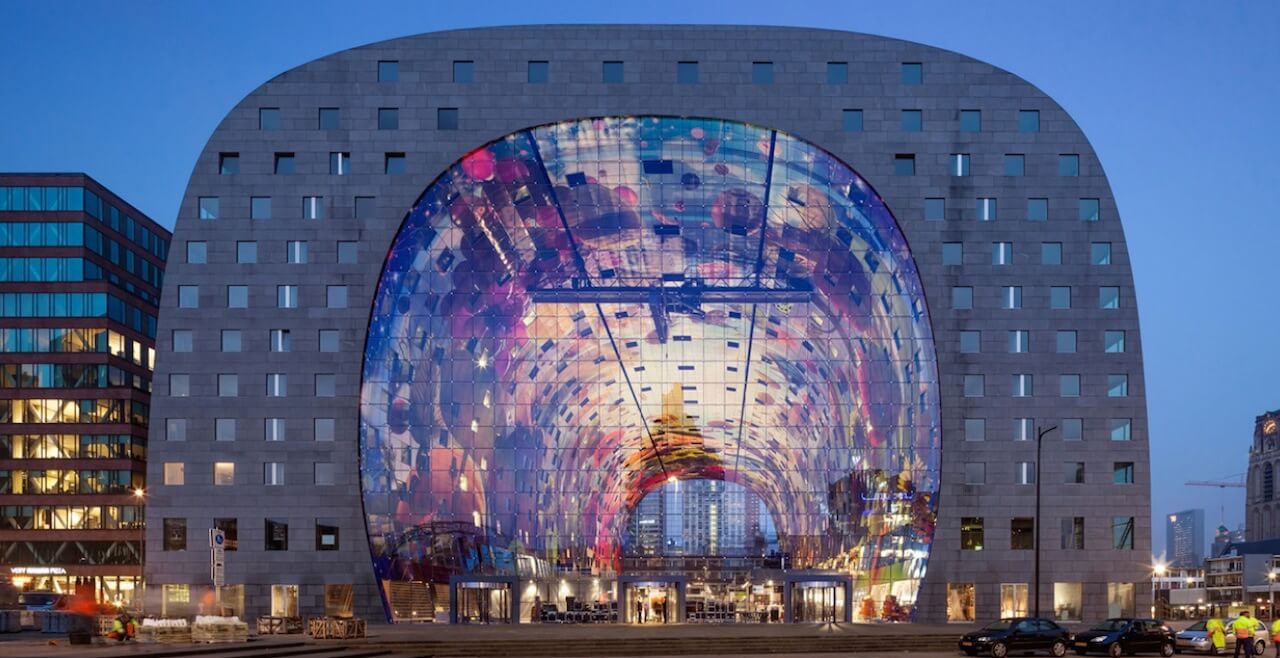
Image Credit: thearchitecturedesigns.com
Postmodernism architects viewed modernism as too serious and harsh since it was constructed from sleek contemporary materials such as steel and glass, which made the buildings feel lifeless and soulless. It is characterized by irony and symbolism and also reintroduces arbitrary ornamentation from past architectural movements.
Postmodern architecture is vibrant and sculptural, removes the architect from having a functional role, and aims to create a dialogue between architectural styles, ideas, history, and culture.
History of Postmodern Architecture
Interestingly, postmodernism started as a critique. Postmodern architecture first started in the 1960s as a reaction to modernist architects’ “less is more” ideals. The famous postmodern architect Robert Venturi described the movement as a combination of complexity and contradictions.
At its foundation, postmodernism was an effort to break free from the practical, understated, and often impersonal style of modern design. Instead, it is among the types of architecture that embrace the unconventional, the flashy, and the strange.
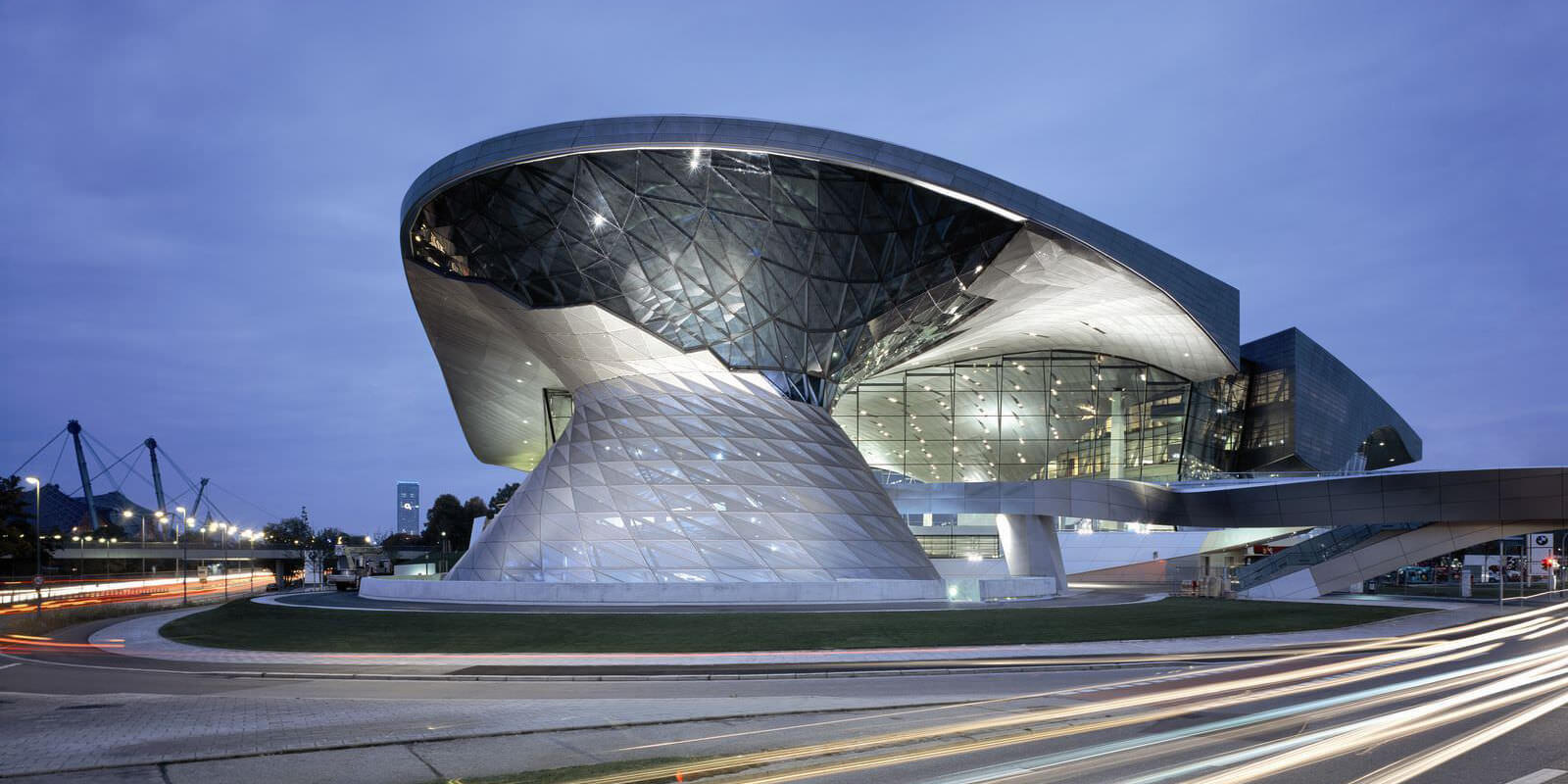
Image Credit: thearchitecturedesigns.com
The postmodern style reflected the evolving social outlooks of the times, fueled by the belief that design did not need to follow rules. Mismatched elements were used to make playfully opulent designs, and definitions of an item’s function became more fluid.
Today, postmodern design enjoys a renaissance, with a return to handmade objects, bright patterns, and out-of-the-box approaches to décor.
Characteristics of Postmodern Architecture
With many variations of postmodern buildings, you may not know how to identify these buildings. However, postmodern architecture characteristics will help make the process be easier. They include:
1. Contradiction
Postmodernism was a contradiction of all the movements that came before it, borrowing inspiration from different cultures and design elements to create unique work. It was a direct response to the suffocating techniques of modern design, including simplistic design and geometric shapes. Postmodern architecture combines new features and forms with contradictory elements of classicism.
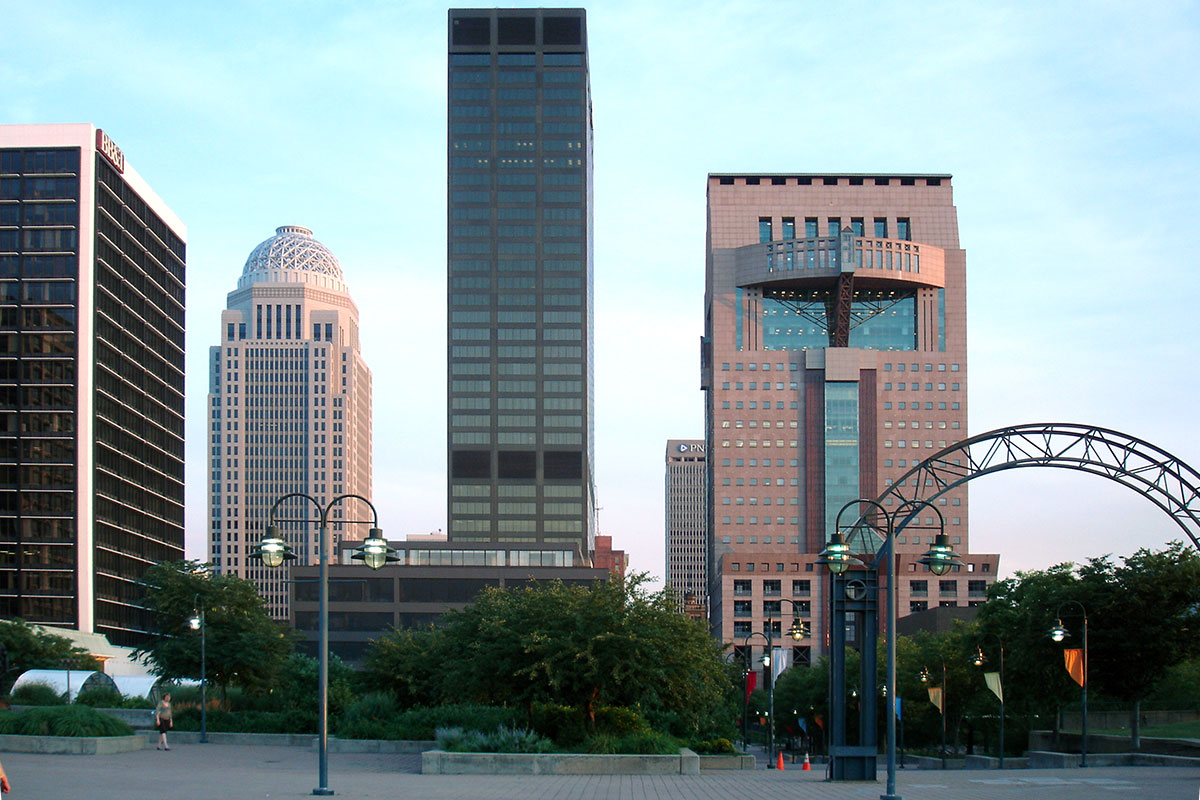
Image Credit: brokensidewalk.com
In the instance of the Humana Building in Louisville, Kentucky, designer Michael Graves combined techniques from several styles to make a statement about preserving history while supporting a progressive approach to design.
2. Asymmetry
Postmodern architecture is hardly symmetrical, orderly, and balanced, and it’s usually curvilinear, whereas postmodern buildings use fluid forms. Asymmetry is a pillar of the postmodern movement thanks to its ability to get attention and create unique buildings which stood out.

Image Credit: invaluable.com
Sloping pillars, walls, and contrasting structures were popular in post-modern architecture, and they provided a fresh view of what it meant to be a functional building. The juxtaposition of these angles and lines intrigued audiences and helped postmodernism establish itself as an architectural trend to look out for. The Groninger Museum highlights this asymmetry through the use of different shapes, colors, and mediums in each of its three main pavilions.
3. Humour
Throughout the postmodern era, especially in the United States, both humor and camp, an ironic style of flashy art that was considered beautiful, were employed interchangeably. While the postmodern movement began as a resistance to modernism’s rigidity, camp postmodern work took the rebellion to new heights.

Image Credit: pinterest.com
Theatrical structures, such as Hotel Dolphin (1987) in the Walt Disney World Resort in Orlando, Florida, were known for their use of humor and exaggeration. Camp architects defied formality and encouraged innovation in new construction and design by pushing the boundaries of what a building may look like.
4. Fragmentation
Fragmentation is another postmodern architectural characteristic where large buildings are broken down into several structures and forms. Sometimes, the different structures will have different functions, and using these different architectural styles and materials, a building can look like a small village or town.

Image Credit: WordPress.com
Postmodern architects were known for designing fragmented buildings that, while still linked as one, appeared to be several independent buildings serving different functions. This helps to bring new life into the structure depending on the time of day it is viewed, providing a completely distinct appearance in daylight than in the evening.
5. Complexity
Complexity can be used to define all postmodern works since integrating a wide range of colors, textures, shapes, and themes create the framework for these one-of-a-kind post-modernist buildings.

Image Credit: invaluable.com
Complexity was used to break free from the homogeneity of modernism and build a new design style. One of the most noteworthy examples of complexity is Frank Gehry’s Dancing House which uses several mediums and lines to create a surreal framework.
Postmodern Architecture Examples
To understand postmodern architecture better, you will need to study some postmodern buildings and structures that authentically follow this architectural style. Here are some notable examples of postmodern architecture:
1. Vanna Venturi House, Pennsylvania, USA
Year Built: Between 1962 and 1964
Architect: Robert Venturi
Robert Venturi’s house, constructed for his mother Vanna Venturi, is the first example of postmodernist architecture. Between 1962 and 1964, Venturi designed and built the house.
:max_bytes(150000):strip_icc():format(webp)/lossy-page1-1843px-Vanna_Venturi_House_in_Chestnut_Hill_Philadelphia_Pennsylvania_LCCN2011631329-8d9dbf2f41da49acbe5cb218b217ff9e.jpg)
Image Credit: thespruce.com
Venturi has gone through six versions of the design before they settled on the current design of the house. Vanna Venturi’s house lies on a flat site and is surrounded by trees.
Some of its postmodern architectural characteristics include a pitched roof instead of a flat roof, an ornamental arch on top of the front door, and a closed ground floor instead of an open floor plan.
2. Piazza d’Italia, New Orleans
Year Built: 1978
Architect: Charles Willard Moore
Piazza d’Italia is a public plaza in downtown New Orleans, designed by Charles Moore and completed in 1978. The architecture reflects the Italian style with a succession of arches, colonnades, and a bell tower set around a central fountain.
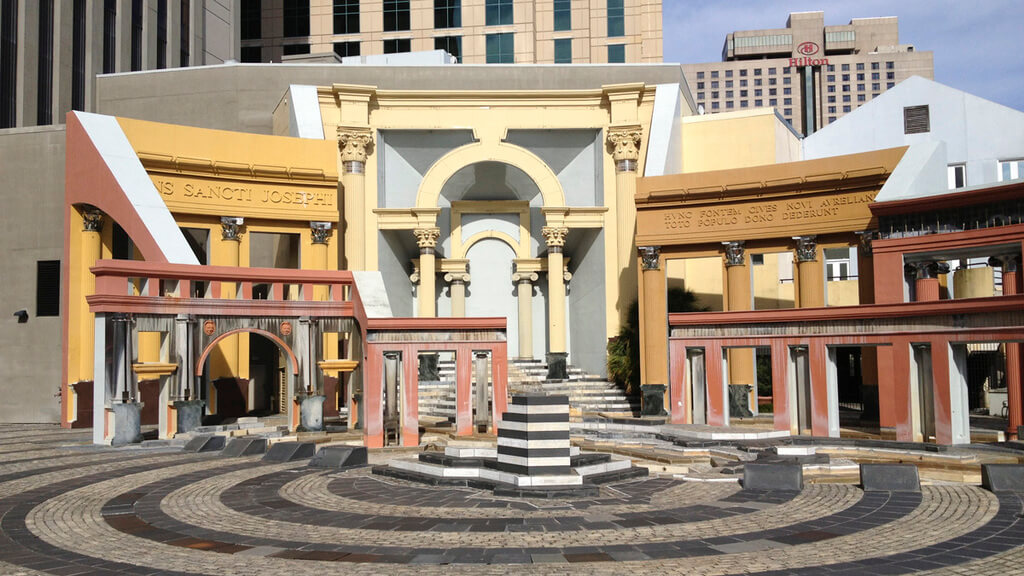
Image Credit: tclf.org
The vibrant colors of this structure are what make it interesting. This is one of the postmodern buildings with numerous colors, and it’s what makes it elegant.

Image Credit: verylocal.com
This structure is popularly known as the postmodern ruin since it is the only building among all the tall modern buildings. There was a period when people forgot about this building, but now people find peace in this location.
3. The Portland Building, Portland, USA
Year Built: 1982
Architect: Michael Graves
The Portland Building was architecturally revolutionary when it initially opened in 1982 and it was designed by Michael Graves, a member of the Memphis Group. It was one of the earliest postmodern buildings to use more traditional materials like reinforced concrete and fiberglass.

Image Credit: wondermondo.com
It included various surface materials and colors, with small windows and decorative flourishes, that sharply contrasted the style of most large office buildings of the time. It was the first major postmodern building, at 15 stories tall, and while it has its critics, it is viewed as classical architecture.
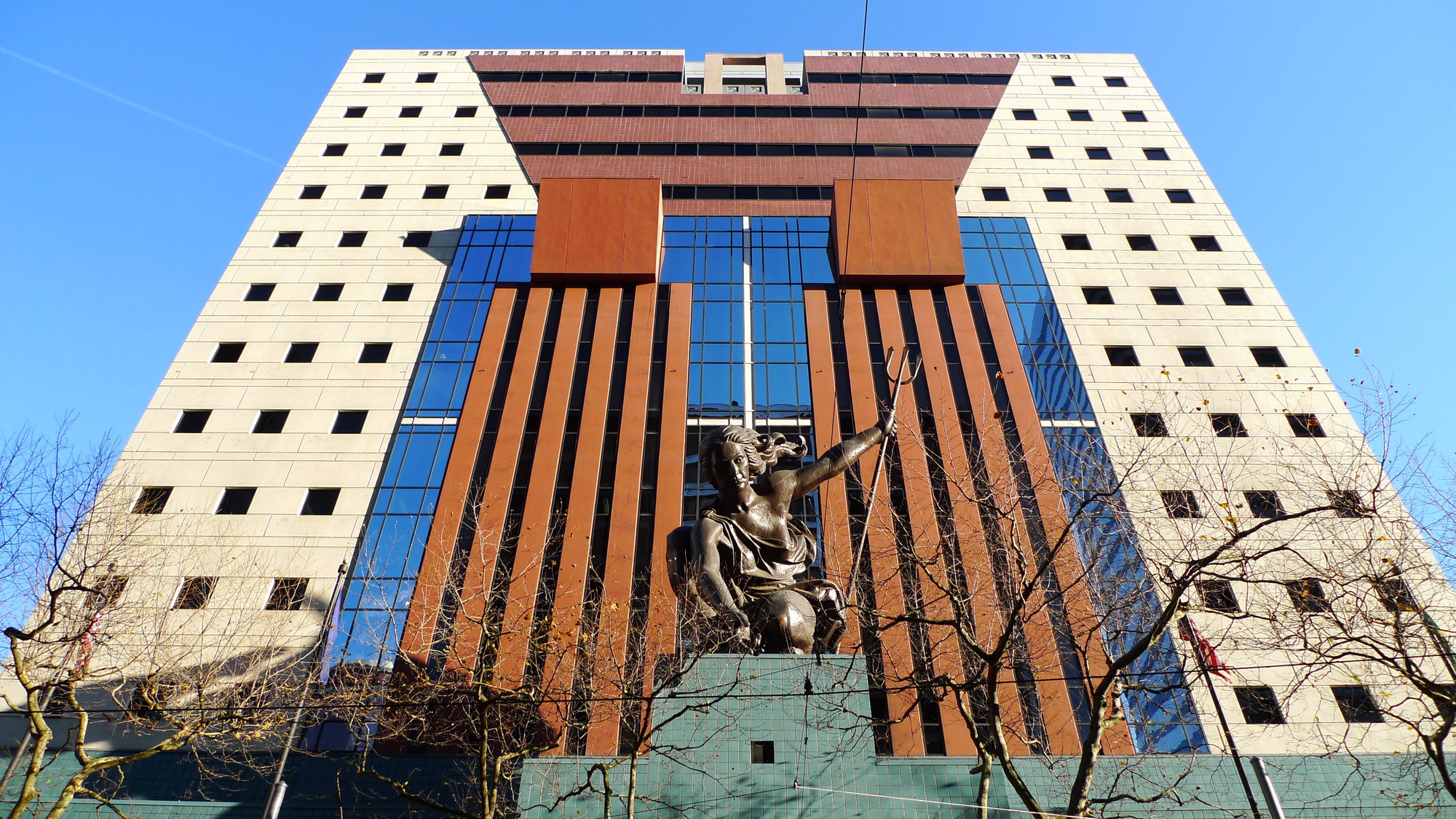
Image Credit: archdaily.com
While many modernist-style buildings of the time used glass to evoke a sense of mysticism, Graves’ work used a range of unique design methods on each side of the building. Graves helped to establish postmodern design as a long-term movement by demonstrating a fresh way to express the same characteristics.
4. Bank of America Center, Houston Texas
Year Built: 1984
Architect: Philip Johnson, John Burgee
Johnson-Burgee Architects created the Bank of America Center (previously known as the NationsBank Center) in Houston, Texas, in 1983, drawing on both gothic architecture and postmodern elements.
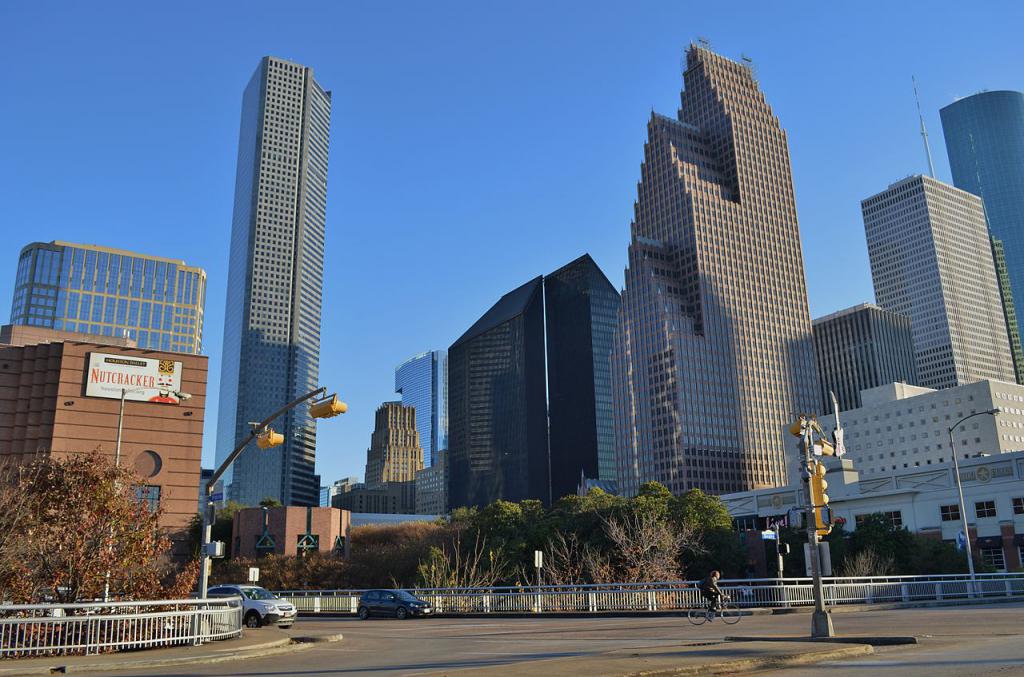
Image Credit: gpsmycity.com
The structure is divided into three towers that are covered with gable roofing and spires to form a medieval-inspired atmosphere and to keep birds from gathering around the building’s many ledges. This building, through combining purpose and extravagant form, serves as a reminder of the various styles from which postmodern design draws inspiration.
5. M2 Building, Tokyo Japan
Year Built: 1991
Architect: Kengo Kuma
This is one of the postmodern structures that incorporate a variety of stylistic elements. It is made of reinforced concrete and contains a variety of classical characteristics such as dentils, corbels, triglyphs, and various scale arches.
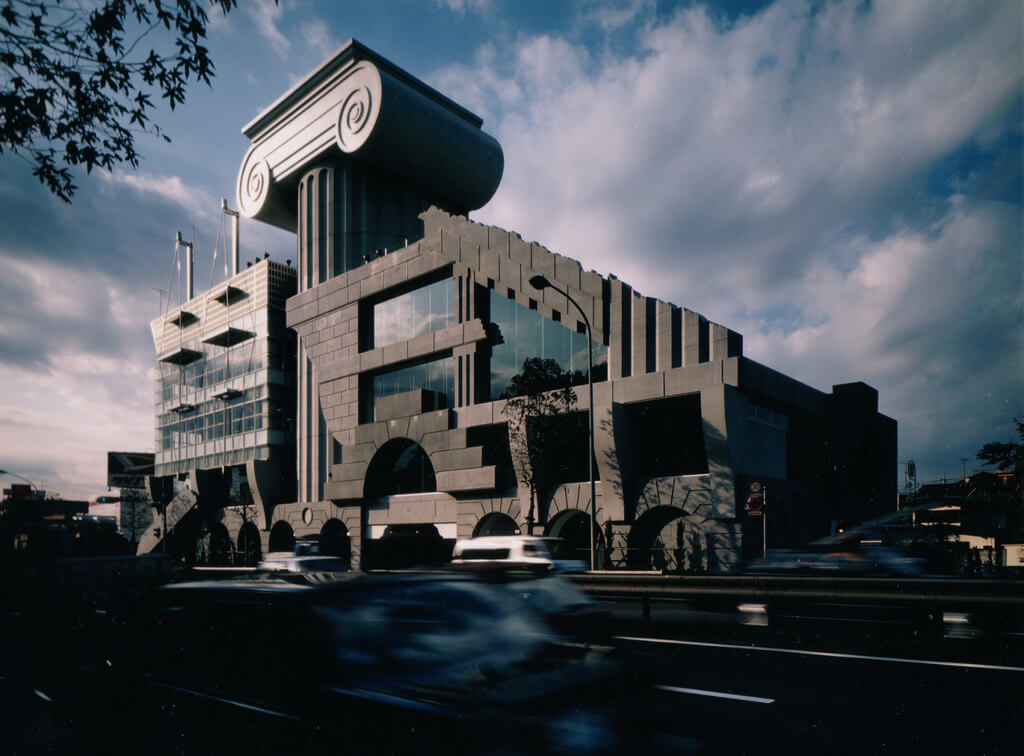
Image Credit: phaidon.com
The iconic column in the center divides the façade into two parts. It also functions as an atrium with a glass elevator shaft. Few people have criticized the architect’s decision to elevate the structure, while some applauded it.
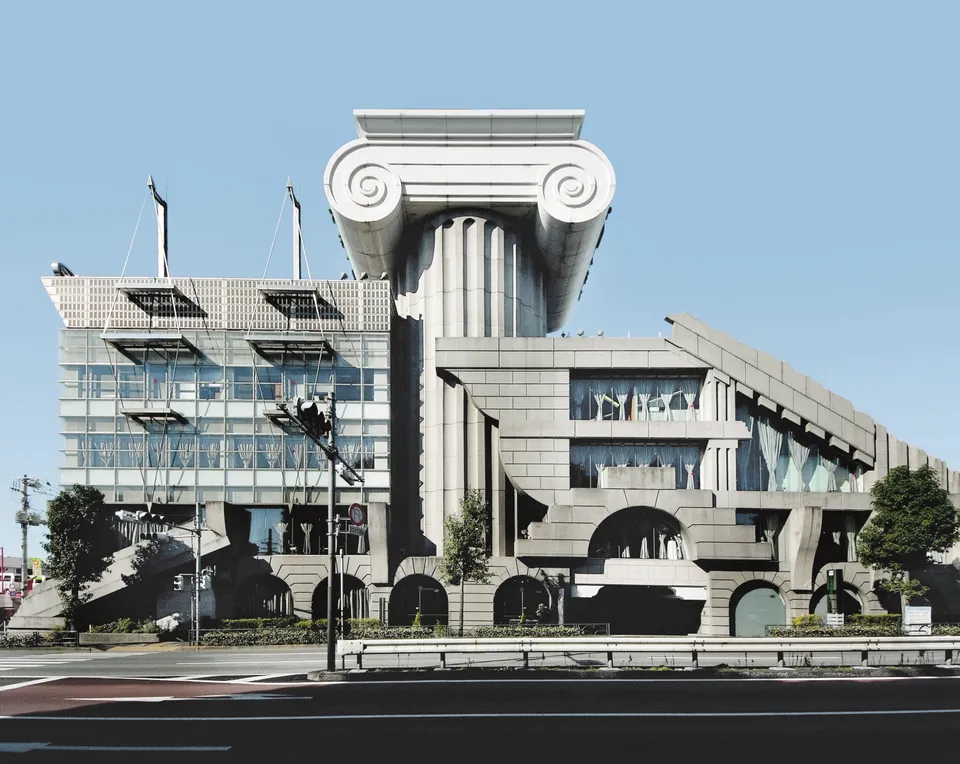
Image Credit: architecturaldigest.com
The structure, which was originally constructed as a Matsuda automotive showroom, is currently used as a funeral home.
6. The Neue Staatsgalerie, Stuttgart, Germany
Year Built: Between 1979 and 1984
Architect: James Stirling
This is one of the many postmodern buildings that is a perfect combination of modern architecture and design with country-type looks.

Image Credit: re-thinkingthefuture.com
This post-modernist architecture combines the modernist movement elements with classicism such as travertine and sandstone juxtaposed with industrial green steel framing.
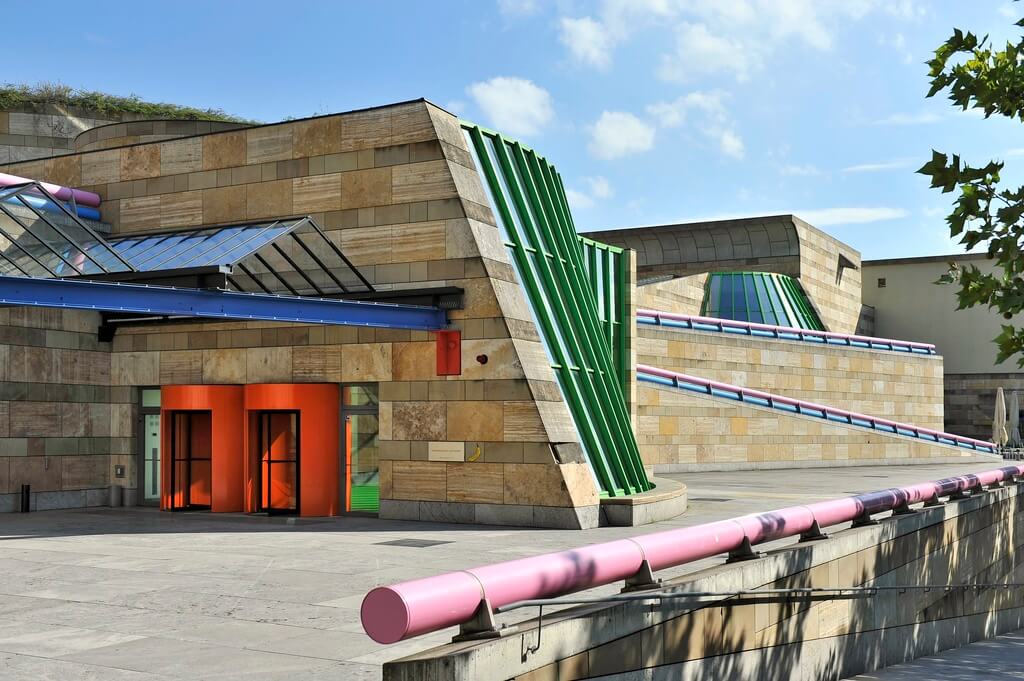
Image Credit: architecturesstyle.com
Warm colors and natural textures were used to keep the design in line with its environment. Industrial and neon are the post-modern architecture characteristics of Neue Staatsgalerie. This combination resulted in a novel skyscraper that could stand alongside historical elements and structures.
7. A House for Essex, Wrabness, United Kingdom
Year Built: 2014
Architect: FAT Architecture and Grayson Perry
Greyson Perry and FAT Architecture collaborated to create A House for Essex.

Image Credit: theculturetrip.com
The plan was to create something that was both a work of art in its own right and a setting for an artwork by Perry.
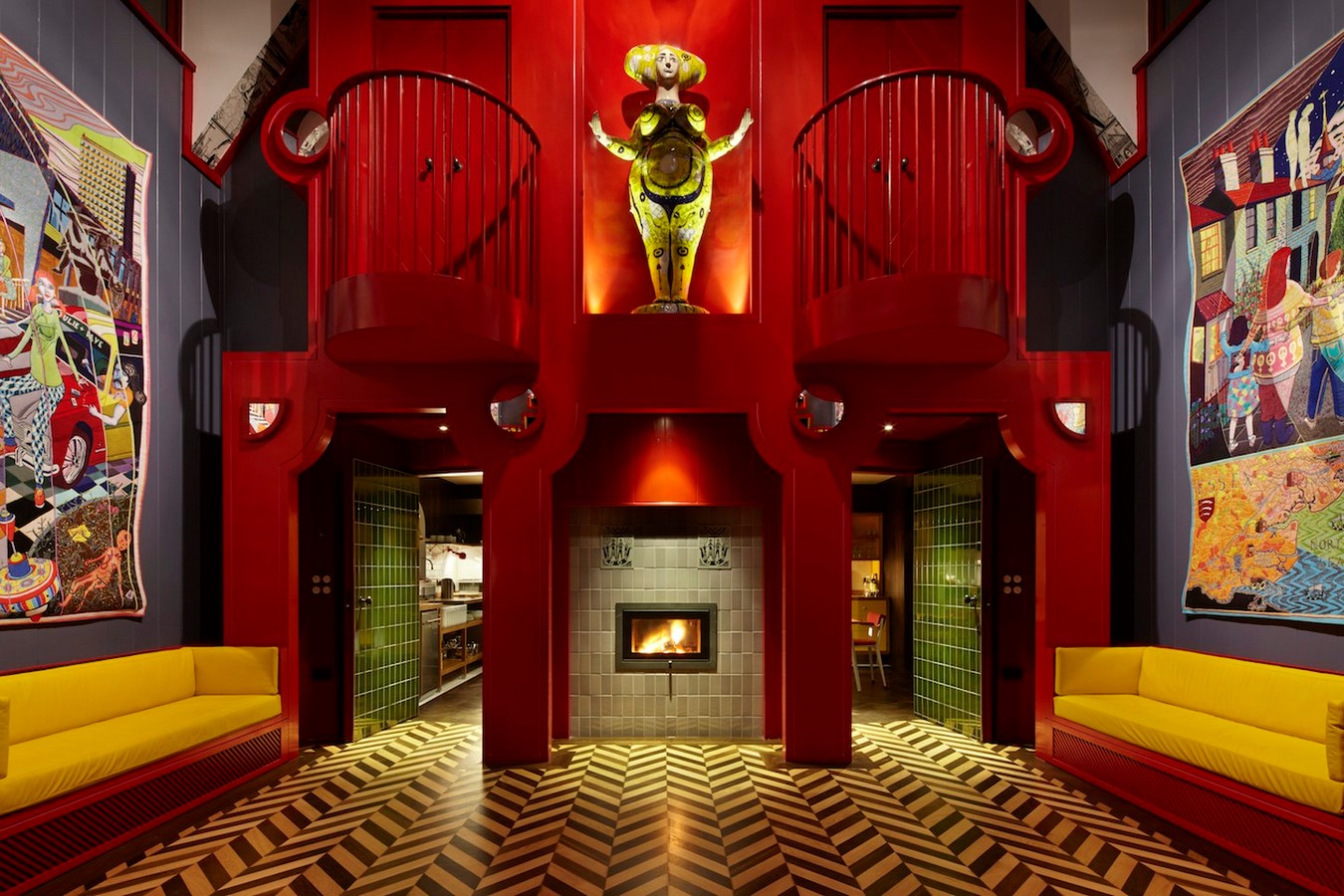
The house, completed in 2015, is new to the list of postmodern works, but it embodies the movement’s principles.
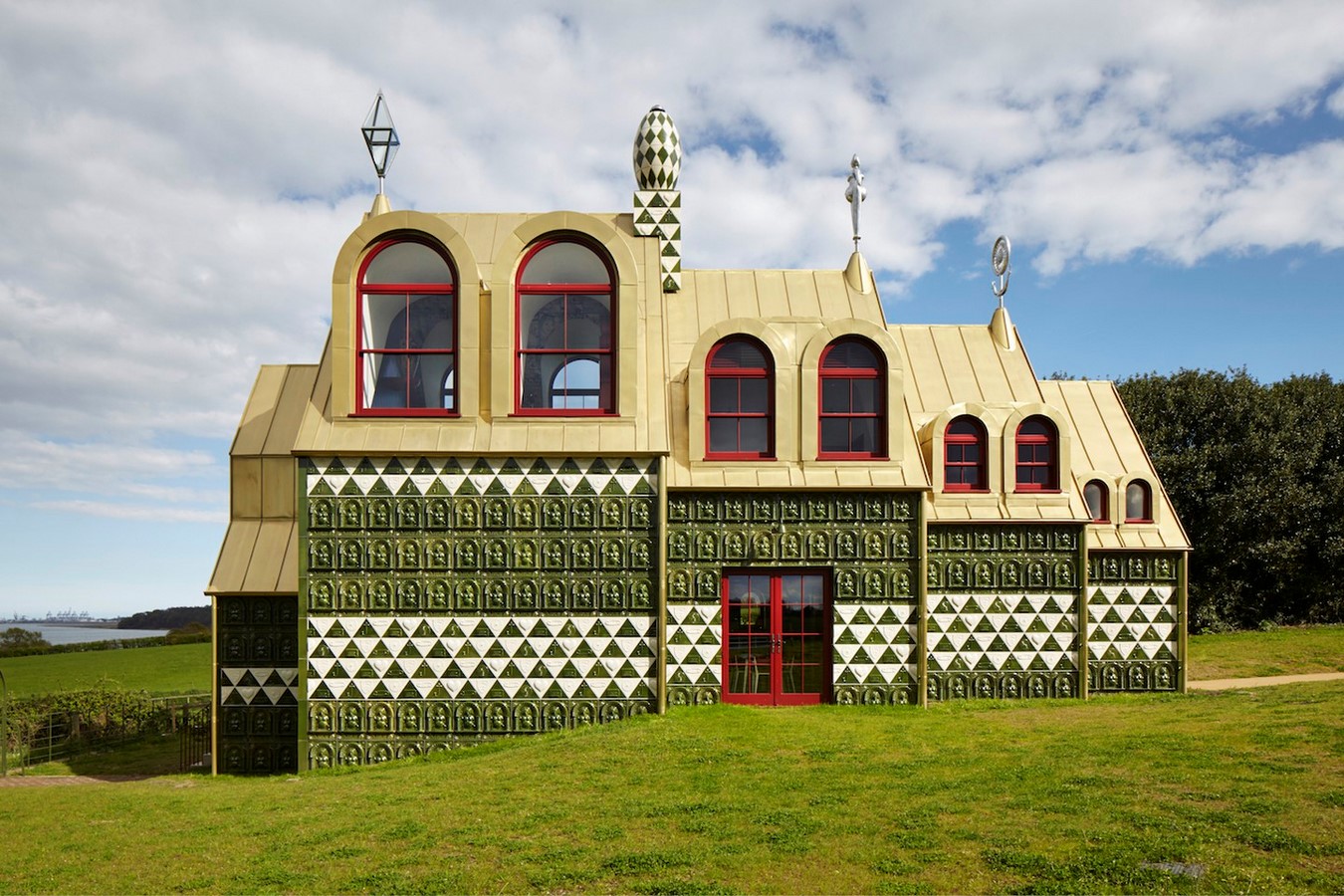
Image Credit: theculturetrip.com
The structure was designed to evoke the tradition of wayside and pilgrimage chapels and is rich in skill and character.
8. Swan and Dolphin Hotels at Walt Disney Resort, Florida, USA
Year Built: 1990
Architect: Michael Graves
The Dolphin and Swan Hotels, designed by Michael Graves with brightly colored animal themes on their exteriors, make them readily noticeable.

Image Credit: wp.com
The two hotels are linked by a palm tree-lined corridor and have a total of 22,000 rooms. The complex construction features a big and spacious area with elegant design elements.
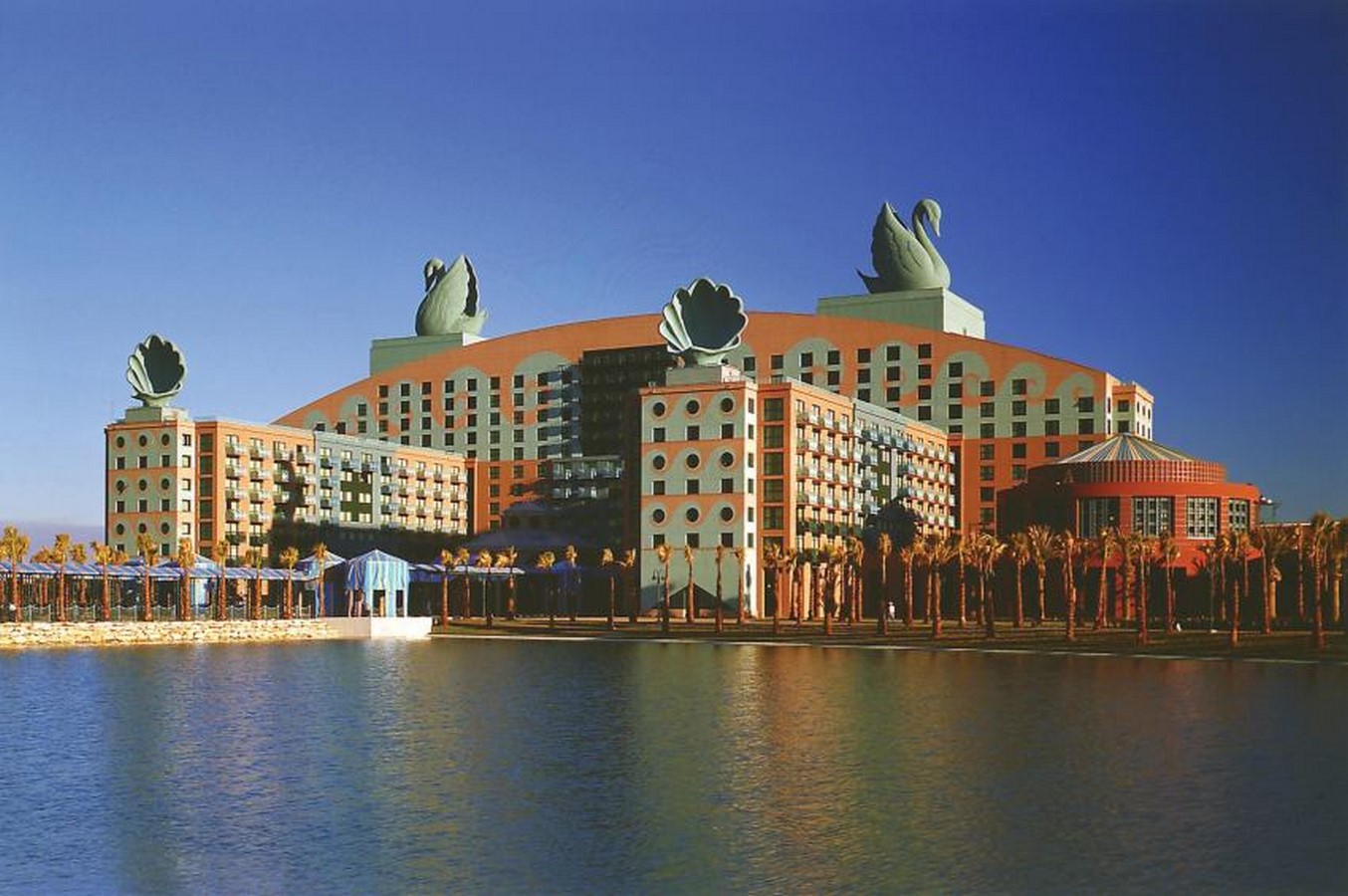
9. Guggenheim Museum, Bilbao, Spain
Year Built: Between October 1993 and October 1997
Architect: Frank Gehry
The Guggenheim Museum Bilbao, a museum of modern and contemporary art in Spain’s Basque province, has proven to be popular with both the general public and academics and critics.
Image Credit: wallhaven.cc
It has a sculpture-like look because of its stunning curves. It blends well with its surroundings since it stands alongside the Nervion River.
10. MI6 building, London, United Kingdom
Year Built: 1994-1995
Architect: Terry Farrell
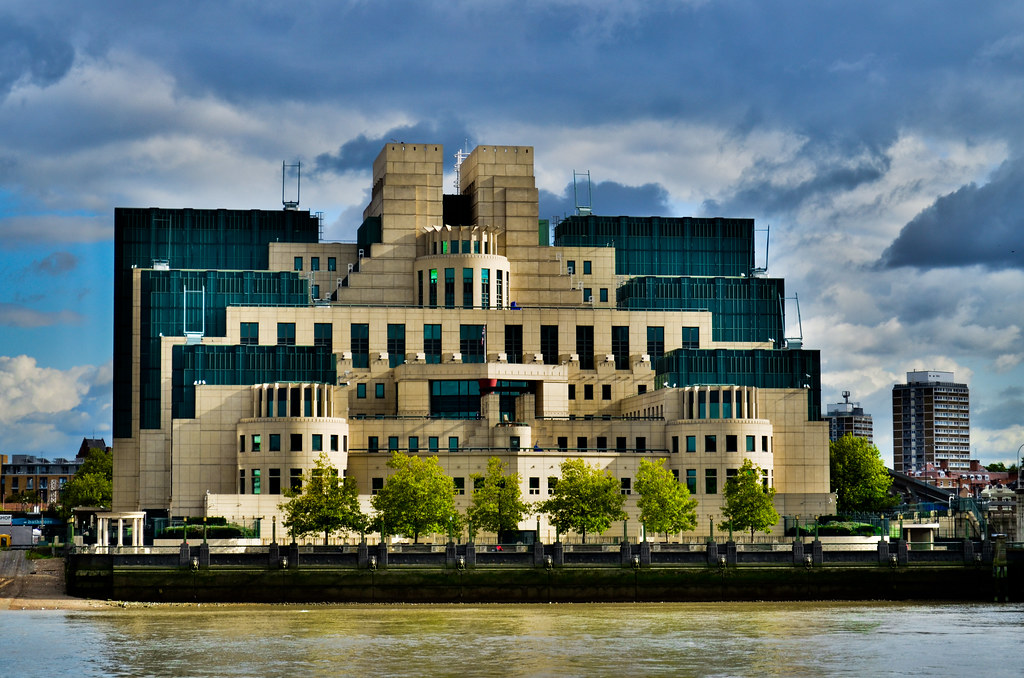
Image Credit: flickr.com
The SIS Building, which houses the British Secret Intelligence Service, is located on the River Thames, near Vauxhall Bridge.
The building, which was designed with influences ranging from 1930s architecture to Mayan and Aztec temples, was officially opened by Queen Elizabeth II.
Conclusion on Postmodern Architecture
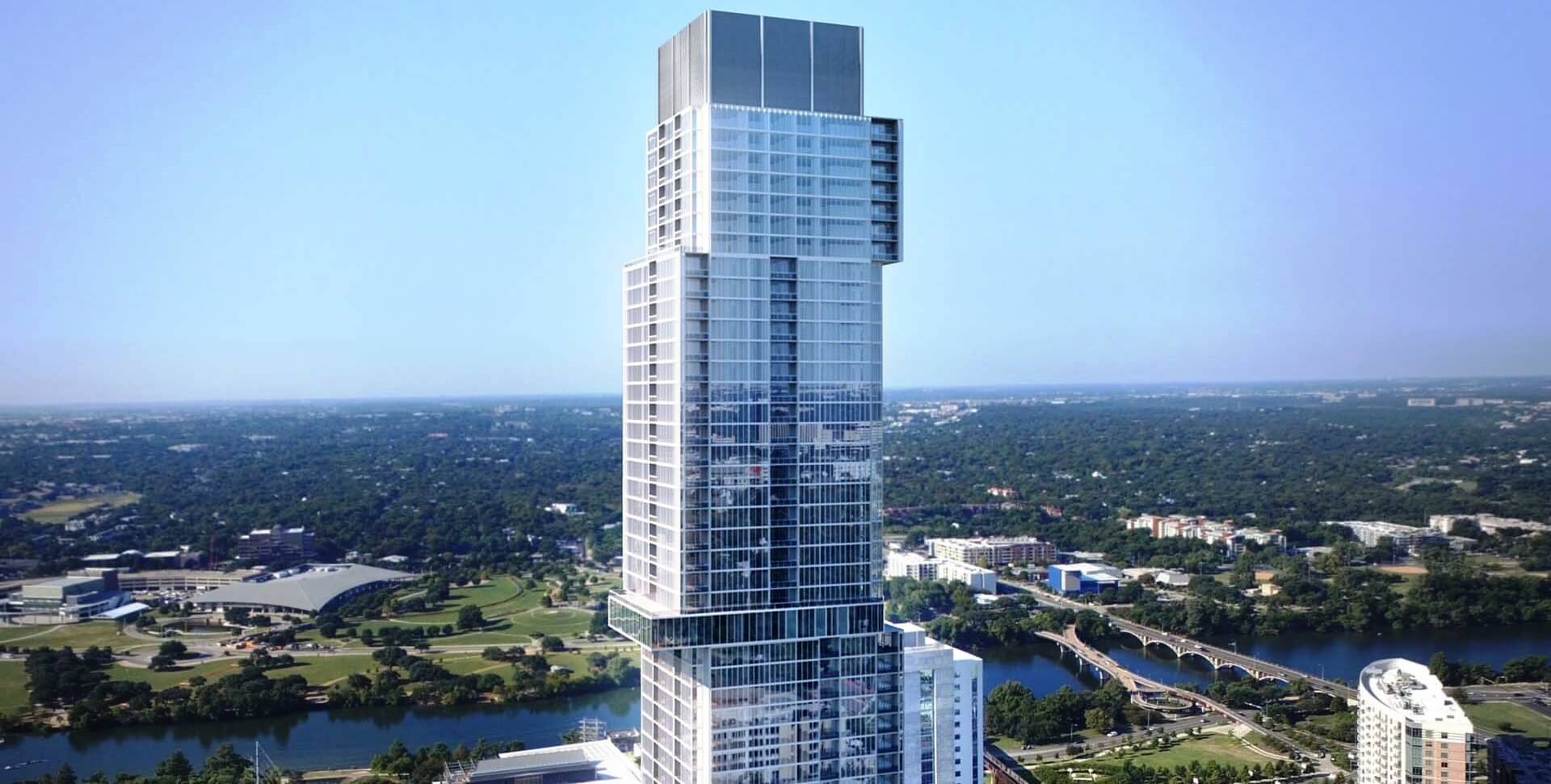
Image Credit: thearchitecturedesigns.com
Various movements have influenced the world of architecture, pushing the boundaries of design and challenging traditional norms. A perfect example is the postmodern architectural movement recognized for its bright, playful shapes and vibrant hues which has left a lasting impression on the architectural landscape and continues to inspire new ideas and provoke debates in the industry.
So, the next time you pass by a building with a distinctive, unforgettable design, take a moment to admire the postmodern architects who dared to be different and left their stamp on the world.
Featured Image Credit: designlimitededition.com

